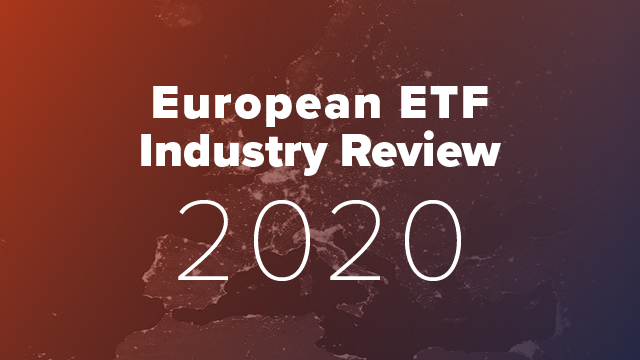This year marked the twentieth anniversary of the European ETF ecosystem and few at the start of 2020 would have predicted the 12 months we have had.
With markets grinding higher at the start of the year, assets in European-listed ETFs passed the $1trn barrier for the first time, a significant milestone for an industry growing at approximately 20% per annum over the past decade.
However, the rapid spread of coronavirus across the globe sent markets into free fall with equities posting losses not seen since the Global Financial Crisis (GFC).
Despite the outflows from ETFs, and other fund structures, the volatility provided the perfect stress test in many segments of the ecosystem ranging from fixed income ETFs through to index construction and oil exchange-traded products (ETPs).
With liquidity rapidly vanishing from the bond market in March, ETFs reacted by trading at all-time high discounts to net asset values (NAVs).
While critics were quick to argue this highlighted a flaw in the ETF wrapper during periods of market stress, the discounts in fact represented real-time prices compared to the underlying bond market which was seeing minimal trades and was therefore in catch-up mode.
Highlighting this, the iShares $ Corp Bond UCITS ETF (LQDE) traded 1,000 times on 12 March while its underlying securities changed hands just 37 times.
It is worth noting, ETF Stream has also argued the discounts represent a measure of the liquidity premium that investors are prepared to pay during periods of market stress rather than showing shifts in fundamental value.
Oil ETPs
While fixed income ETFs certainly passed a much-needed liquidity test after a decade-long bull market since the GFC, the same could not be said for oil ETPs which experienced a tumultuous two months.
On 21 April, oil prices did the unthinkable and started trading below $0 a barrel for the first time in history leaving investors in oil ETPs at risk of having their returns wiped out entirely.
This was because oil ETPs were entirely exposed to front-month futures contracts and with investors piling into these products in the hope of catching the bounce in prices, this left ETF issuers with little choice but to rebalance the products’ holdings into safer contracts further up the futures curve.
The volatility meant Europe’s largest oil ETP, the WisdomTree WTI Crude Oil ETP (CRUD), halted creations meaning the product could no longer take inflows.
Worse still, brokers started withdrawing from the market. WisdomTree, for example, was forced to close eight oil ETCs after its swap provider, Shell Trading Switzerland, terminated the purchase agreements.
With oil ETPs having to significantly adjust the way they offer investors exposure to the market, parts of the ecosystem such as the European Fund and Asset Management Association (EFAMA) were keen to highlight the different ETP structures.
In a move to provide investors with a clearer understanding of the ecosystem, EFAMA released a report in November splitting the landscape into three categories; exchange-traded funds (ETFs), exchange-traded commodities (ETCs) and exchange-traded notes (ETNs).
This move was also made by the big ETF issuers in the US which came under fire after they tried to split short and leveraged ETFs into a separate category; exchange-traded instruments (ETIs).
Index providers
Another area that gathered much attention following the heightened volatility was the role of index providers.
Major players such as S&P Dow Jones Indices (SPDJI) and FTSE Russell made the decision to delay their regular rebalances in a move to maintain some stability as markets continued to take investors on a wild ride.
The decisions, which were not implemented by all index providers, was met with some criticism from corners of the ecosystem who argued this highlighted the power index providers have.
However, others said this was a sensible ploy which saved investors significant costs had the scheduled rebalances taken place.
Later in the year, SPDJI captured the headlines by finally announcing the inclusion of Tesla in the S&P 500. The electric vehicle maker is set to make-up 1% of the index when it joins on 21 December.
ESG ETFs
A review of the $1.1trn European ETF industry in 2020 would not be complete without the mention of the meteoric rise of ESG ETFs over the past 12 months.
Along with a record €22bn piled into ESG ETFs in Europe, ETF issuers this side of the pond have been launching strategies at a rate of knots.
Some 72 ETFs have been launched this year, according to data from Morningstar, which is almost double the previous record set in 2018 and almost half of all ETF launches in 2020.
Potentially even more remarkable was ESG ETFs in Europe saw inflows in March despite overall European-listed ETFs suffering their worst monthly outflows on record.
This reveals the structural shift to sustainable assets that is taking place in the ETF space aided by regulation, strong performance and a more socially-conscious investor set.
In ETF Stream’sreview of 2019, we predicted ESG and fixed income would be the key battlegrounds for ETF issuers heading into the new year and it appears these two asset classes will continue their rapid expansion in 2021 as well.



